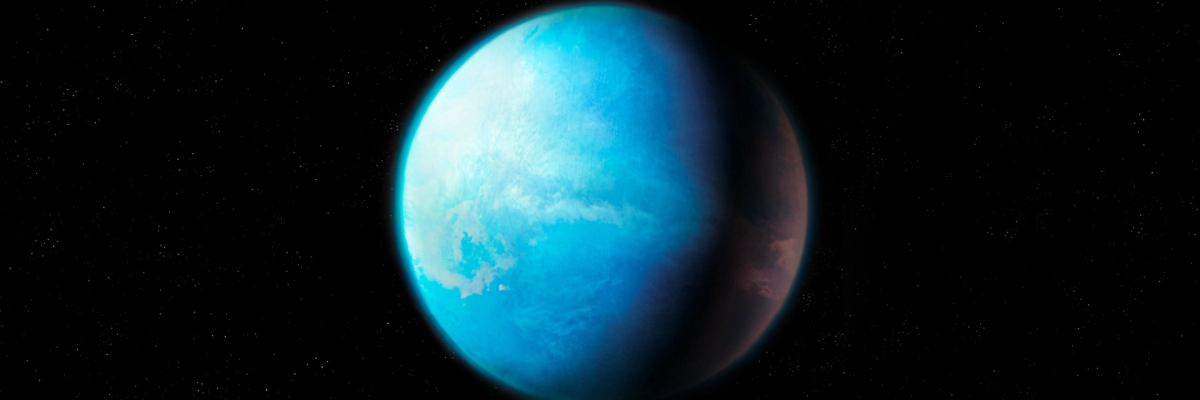A group of scientists has found one of the most compelling pieces of evidence of extraterrestrial life.
As a result of several studies and repeated analyses, numerous molecules have been detected on the exoplanet K2-18b, the source of which could be living organisms, namely — marine algae.
“For the first time, humanity has observed potential biosignatures [i.e., manifestations of the consequences of life activity] on a habitable planet,” says one of the authors of the study, Cambridge University researcher Nikku Madhusudhan. However, the scientist clarifies that it is still too early to definitively declare the presence of life on the planet. One possible explanation for the existence of living organisms there could be that K2-18b is covered by a warm ocean.
Astronomers discovered the planet in 2015 using data obtained from the Kepler space telescope. Later, it was confirmed with the help of the Spitzer telescope. And the launch of the James Webb telescope in 2021 allowed scientists to study the planet in more detail. It is located at a distance of 124 light-years from the Sun. It is also known that K2-18b belongs to the class of sub-Neptunes. This is the name given to planets whose size is approximately between Earth and Neptune — the most common type in the Milky Way. In addition, the planet K2-18b has no analogues in the Solar System.
Back in 2023, researcher Madhusudhan reported signs of the presence of a special molecule on the planet, which consists of sulfur, carbon, and hydrogen. On our planet, this compound is produced, for example, by certain types of algae. Nevertheless, not all astronomers agree with Dr. Madhusudhan’s opinion. For example, Cornell University astrophysicist Christopher Glayne believes that K2-18b may simply be a huge chunk of rock with an ocean of magma and a hydrogen-rich atmosphere, where life as we imagine it is hardly possible. To find this out, scientists will recreate in laboratories conditions that most closely resemble those detected on K2-18b and other sub-Neptunes, and continue their observations and calculations.
“It is important to remember that we are only beginning to understand the nature of these exotic worlds,” said Matthew Nixon, a paleontologist at the University of Maryland. Researchers are now awaiting new data from the James Webb telescope. And the independent National Aeronautics and Space Administration (NASA) is developing even more powerful space telescopes designed specifically to search for signs of life on distant planets. However, many scientists are concerned, as the Trump administration plans to cut NASA’s science budget in half. Astrobiologist Joshua Krissansen-Totton of the University of Washington says that if funding is indeed cut, “the search for life on other planets will effectively come to an end”.
Share this with your friends!





Be the first to comment
Please log in to comment